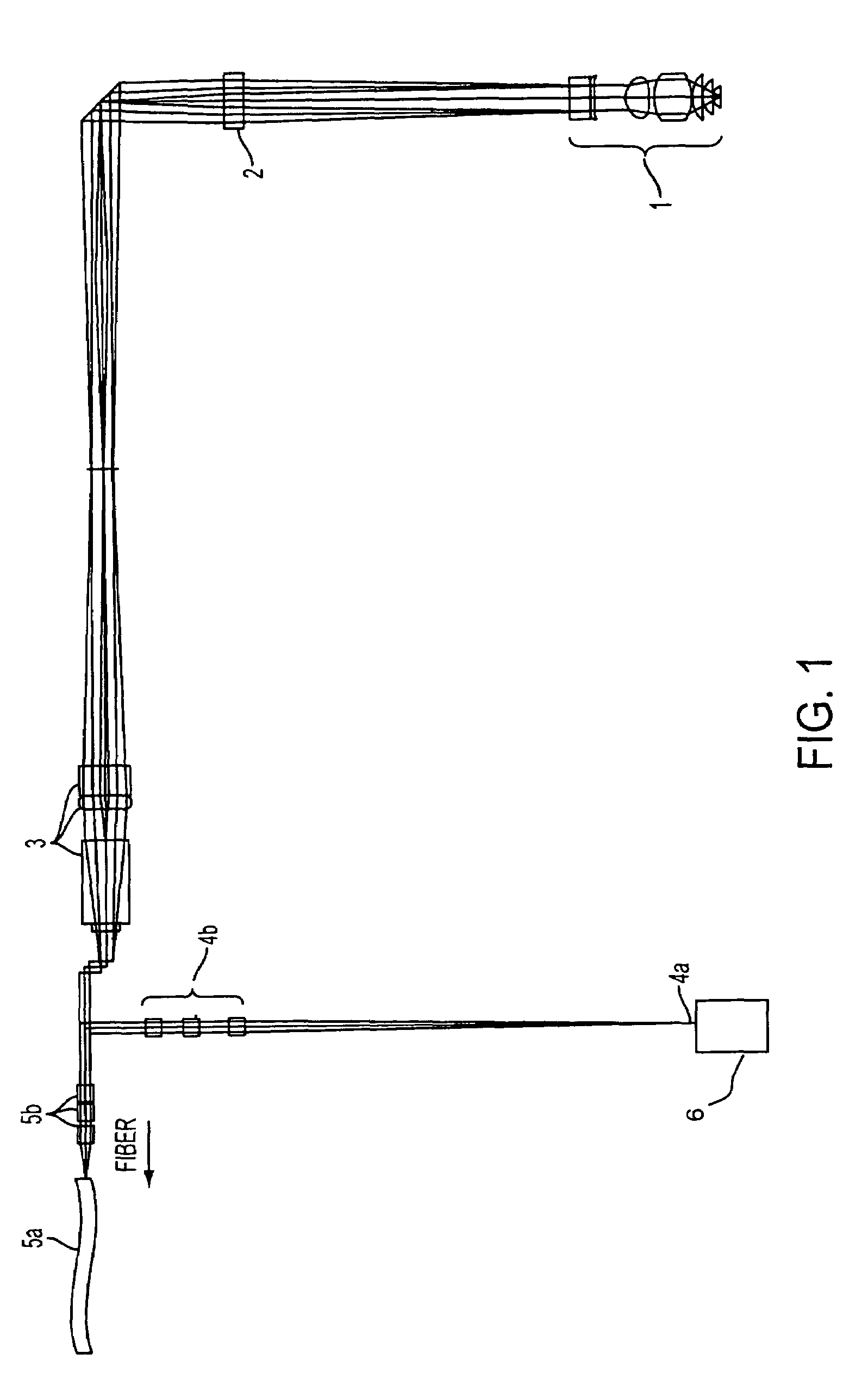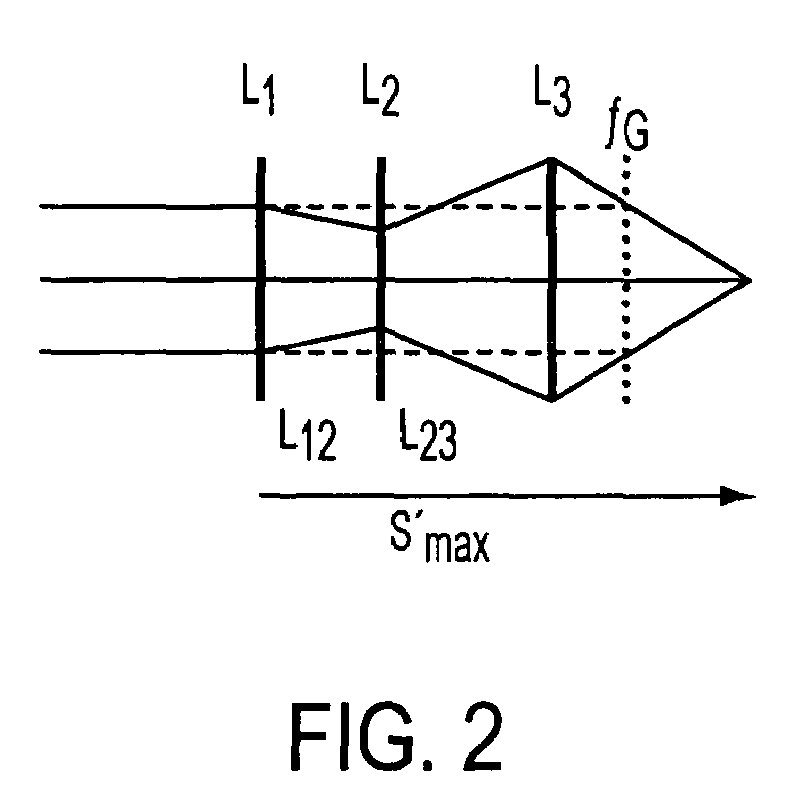Laser-scanning microscope with collimator and/or pinhole optics
a collimator and optics technology, applied in the field of laser scanning microscopes, can solve the problems of frequent substantial mechanical adjustment paths
- Summary
- Abstract
- Description
- Claims
- Application Information
AI Technical Summary
Problems solved by technology
Method used
Image
Examples
embodiment example
6. Embodiment Example for Focal Distance f′=22 (Collimator Optics)
[0034]The collimator optics have the task of transferring the point source at the fiber output with a numeric aperture of about 0.07 into a parallel beam with a diameter of 3.2 mm in the infinite space in front of the scan objective lens. For this purpose, optics with a focal distance of 22 mm is required. It should further realize a partial compensation of the chromatic distortion of the objective lenses by means of rotation of the chromatic curve. The imaging of infinite into the fiber output can be performed as follows (where each lens group is replaced by a single lens):
[0035]
SequentialDistanceRadiusGlassLens focalRefractionnumber[mm][mm]Typelength f′index neνε1infinite 10.1N-FK516.41.4891479.52 3.6−34.03 1.7−11.2F2−11.61.6240841.04 3.6 23.25 3.7 7.3N-FK516.11.4891479.56 3.6 81.7714.3infinite
where νε is the Abbe number at a wavelength of 546.1 nm (the yellow-green Fraunhofer line “e” in mercury).
Distances:
d2: thic...
PUM
 Login to View More
Login to View More Abstract
Description
Claims
Application Information
 Login to View More
Login to View More - R&D
- Intellectual Property
- Life Sciences
- Materials
- Tech Scout
- Unparalleled Data Quality
- Higher Quality Content
- 60% Fewer Hallucinations
Browse by: Latest US Patents, China's latest patents, Technical Efficacy Thesaurus, Application Domain, Technology Topic, Popular Technical Reports.
© 2025 PatSnap. All rights reserved.Legal|Privacy policy|Modern Slavery Act Transparency Statement|Sitemap|About US| Contact US: help@patsnap.com



